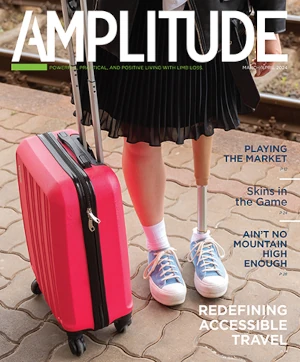
Future generations of prostheses could include sensors that send signals back to the brain so amputees can feel with their artificial fingers. Photograph courtesy of DARPA/JHUAPL.
While athletes at the recent Warrior Games were able to run, jump, and throw using some of the latest prosthetic arms and legs, the next generation of this technology will allow them to do much more.
“We have developed prosthetics that interact directly with the brain and move much like a real limb. Beyond movement, these advances will restore the sense of touch,” said Michael McLoughlin, chief engineer for Research and Exploratory Development at the Johns Hopkins University Applied Physics Laboratory (JHUAPL) in Laurel, Maryland. “This will give wounded warriors and all who have lost use of their arms by amputation or paralysis much better options in the future.”
McLoughlin’s lab is supported by the Defense Advanced Research Projects Agency (DARPA), the military’s primary research and development office for cutting-edge technologies. DARPA, in turn, is one of the agencies that work with the Military Health System to make sure wounded warriors get the prostheses they need. Much of what he talks about regarding how the artificial limbs interact with the body’s own nerves is futuristic, but some of the technology is available now.
“If you’re just trying to do something simple, such as operating a hook or rotating the wrist, that’s easy,” McLoughlin said. “[But,] we’re unlocking the power that already exists in your brain to make the prosthetic work more like a natural hand.”
Besides the advantages of more-natural motion with a prosthetic arm or hand, McLoughlin said these prosthetic limbs might help diminish phantom limb pain, a condition many amputees experience. The prosthesis connection to the nerves helps the wearer develop a sense of embodiment. “When the brain sends a command to move the hand and sees the prosthetic hand opening and closing as expected, it can help end the disconnect that is believed to contribute to phantom pain.”
In addition, the next generation of prostheses will use sensors to send signals back to the brain so amputees could actually feel through their artificial fingers.
McLoughlin believes this will make a tremendous difference in the lives of injured service members and civilians alike.
“Many are young men and women in their 20s,” he said. “They have a lot of great experiences ahead of them-careers, getting married, having children. This could give them back something personally: a chance to gain back some of what was lost due to the injury.”
This article was adapted from information provided by Health.mil.



